Which metronome should I buy?

Which metronome should I buy is a question all musicians end up
asking once they reach a certain skill level and become aware of the
necessity of owning a metronome. There are a vast array of different
types and styles of metronomes with different features. Of course,
everyone wants to get the best metronome with the most features for
their money..but which metronome is that? To help make the decision here
is a list of the metronomes I use and those that musician friends have
recommended to me. This is obviously not an exhaustive list. There are
many other makes and models out there and it is always a good idea to
research before you buy.
These are the models I know have proved useful, reliable and good value for money.
If you are wondering which metronome to buy - electronic or clockwork click here for advice on whether to buy an electronic or clockwork metronome. (This opens in a new window)
All the metronomes on this page are available in my Metronome store at Amazon.com or my Metronome store at Amazon UK...although you may find zZounds cheaper for the electronic models.
Qwik Time QT3
First on my which metronome list is my own metronome the Qwik Time QT3.
I have owned this metronome for over 7 years now and it has done great
service. It has been thrown in an out of cases, dropped, lost, found,
had drinks spilled on it and is still working (although just recently I
have had to shake it to make it start - hence i am looking for a
replacement...and by 'looking for' I mean 'trying to persuade myself I
need a new toy with more features instead of buying exactly the same
reliable piece of equipment again!' The QT3 has minimal features. There
is no accented beat, there is no built in tuner (although it does give
an A=440 reference tone), there are no fancy bells and whistles at all.
What makes this the perfect metronome for me is it just works.
Pros
- Easy to use - just select the tempo with the arrows on the front and away you go!
- Blinking LED to give a visual reference to the beat as well as the audio click
- Headphone socket
- Handy reference for converting musical terms to BPM around the outside
- Increments of 1 beat-per-minute for total accuracy if you are trying to find and play at the exact tempo of a recording
- Low price
Cons
- The click is very loud and there is no volume adjustment - I never put headphones in mine as I would worry about my eardrums!
- What looks like a wheel isn't! It would be great to have a
wheel and just turn to the required tempo instead of having to push
buttons. For this reason I am considering the Sabine Zipbeat also branded the Matrix MD600 at Amazon.com. Unfortunately I haven't found this available in UK but the Seiko SQ50
also has a handy dial on the front.
The QT-3 is available at zZounds for $14.95.
Boss DB-30
Many of my friends have recommended the Boss DB-30 over the years. This metronome is ruggedly built and has plenty of features to justify the $39.95
price tag including play-along rhythms and a LCD needle for visual
reference. This is the model I often recommend to intermediate and above
students when they ask me which metronome to buy.
Pros
- LEDs and a large LCD with LCD needle for visual reference.
- Tap tempo feature to help find the tempo of another performance or match the tempo you have in your head
- Play along patterns including irregular time signatures and clave patterns for latin music practice
- Pleasant tone - but one which I found easily cut through the piano sound when I borrowed a DB-30 to test
- 12 internal chromatic reference tones
- Headphone jack with volume control
Cons
As far as I can see and have been told...none!
Peterson BBS-1 BodyBeat Sync Wireless Pulsating Metronome
The Peterson BBS-1 is the update to the Peterson BB1 and is a new concept in metronomes as it vibrates in place of clicking or flashing lights, both of which can be distracting. With the BBS-1 you literally feel the beat. I have a Peterson BB1 and I am a complete convert! I have used it when practising piano, clarinet and saxophone in both classical and jazz styles and I just don't think it can be beaten. My students also love it. The BBS-1 has the added feature of being able to Sync to other metronomes! So the entire band can feel the beat in sync! This is a phenomenal advance in metronome technology!
Yes, it cost just over $100, which is considerably more than the Boss DB-30 above, but the ability
to fully focus on the sound of your playing makes it more than worth
it. I am barely conscious of the vibrating, although it clearly
keeps me in time. When I wrote the original review I put "Now if Peterson could come up with a way of
connecting this to my Mac so I could use it for the click when recording
in Logic..." and amazingly they listened. I'm not sure if this could actually connect and be used for a click track - but I will soon be finding out as I have ordered one!!
As with all metronomes I don't recommend playing with the metronome on all the time, no matter which metronome you use. It is important for us as musicians to develop an internal metronome and allow the music to flow and breath - which means allowing the 'human factor' of small differences of tempo to be present. Computer sequencers even have a humanize function to introduce random timing errors and make the music seem less robotic! No matter which metronome you have use it to establish and check tempo, and to ensure difficult passages are played in time. Also use it to ensure you are keeping tempo when practising sections slowly.
Pros
- IT VIBRATES INSTEAD OF CLICKING!
- Also includes audio and visual modes for the more traditional who want to transition to the vibrating feature over time
- There is an A440 reference tone included.
- It seems pretty sturdy
- 2 or more can be sync'd together wirelessly
- Until this catches on you will be the one with the coolest new toy!
Cons
- It is quite expensive...but it vibrates!
It's not often there are great advances in metronome technology...but this is one of them! As long as this is as rugged as it seems there will be no need to ask me which metronome to buy...I will recommend this one! Buy one now, if not for yourself - then get one for the drummer in your life - he or she will love it, and you will love the way your drummer plays when using it!
Boss DB-90
The Boss DB-90 is the flagship of the Boss metronome range and ideal for drummers, guitarists and bassists who want a little more than a click to enhance their practice sessions. It is loaded with quality sounds and drum patterns and incudes a Rhythm Coach function with built-in mic, an instrument input for direct connection of guitar and bass plus headphone monitoring, a MIDI input and a reference tone (A438 - 445 in 1Hz steps) for tuning. What more could you ask for?
The Rhythm Coach has four training modes that help build drumming speed, accuracy and endurance. You can use the Rhythm Coach feature with acoustic drums and the built-in mic, or you can plug a Roland V-Pad into the trigger input.
The DB-90 also syncs to an external sequencer via the MIDI input, which would be very useful for drummers who use a click track on stage.
I won't do a pros and cons list for this
metronome as I only know one drummer who owns it and he has only just
purchased it, although he is initially very happy with it. He bought it
because he had read good reviews from other drummers on a forum posting
on which metronome is best for drummers. I may add this later as I find
out more. If you own this metronome and have anything you would like to
share with the readers of this page please let me know via the Contact page or make a FB comment below.
Clip-on Metronomes
I also have 10 Clip on metronomes in my classroom. These are simple to use, clip directly onto the music stand, have a click and LED, mean peripatetic instrumental teachers don't have to carry their own metronomes around and they can easily be loaned to beginning students who don't have a metronome of their own yet. Look no further if you are wondering which metronome is good for general classroom use. This metronome also feature a clock so there is no excuse for turning up late to lessons when a student has one of these!
Other metronome options
If you have an iPod Touch or an iPhone you might like to try one of the available metronome applications. Go to the App store in iTunes and search for iTick and Metronome. Both of these are free Apps.
Metronome shows a picture of a classic metronome. You slide the
virtual weight up and down to alter the tempo, which is shown at the top
of the metronome. Just push the arm to set it clicking.
I actually prefer iTick
This shows a series of lights as well as having an adjustable volume
click and uses the OS system of dials to set time signature and tempo.
You can also select tempo via a traditional list of musical terms.
There are also various computer software versions of metronomes available but I hesitate to recommend them when people ask me which metronome to buy as I am not a great believer in having a computer in the room when practising. It just makes it too easy to get distracted looking up that important point you saw on the Essential Music Practice site!
Traditional Metronomes
Many people prefer the look (and some prefer using) a traditional metronome. I have a Wittner model and I always recommend Wittner when people ask which metronome to buy if they are looking for a traditional metronome. These classic clockwork metronomes are superbly built from the finest materials. I received mine as a gift and it sits on my piano looking lovely!
You can find several Wittner models in my Metronome store at Amazon.com or my Metronome store at Amazon UK along with all the other metronomes recommended on this page...although you may find zZounds cheaper for the electronic models.
Expert Practice Secrets
Frustrated with your practice? Read Practice Makes Perfect and hack the 10,000 hour rule. Cut your practice time by up to 25%! Make faster progress, learn pieces and scales faster, memorize more easily, and much more. "If you play an instrument you need this book!"
Recent Articles
-
How To Speed Up Scales and Improve Accuracy
Oct 13, 24 04:23 AM
How to speed up scales is something many people want to know, but speed should also come with accuracy. Read on to find out how to do both. -
From an opera singer, on her death bed to Leonard Bernstein
Jan 29, 24 03:36 PM
I enjoy reading the music more than hearing it. From an opera singer, on her death bed to Leonard Bernstein -
unknown
Jan 29, 24 02:52 PM
Not happy with your tone? Practice more.
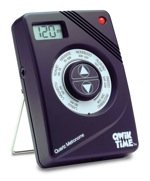
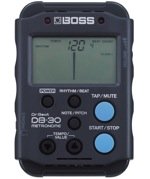
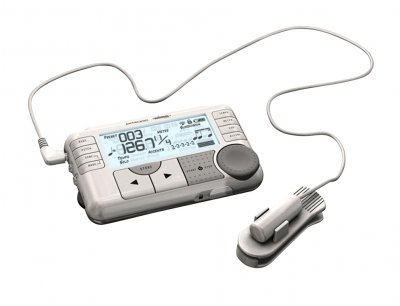
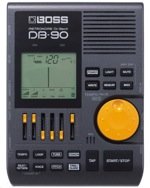
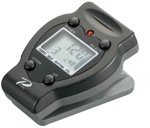
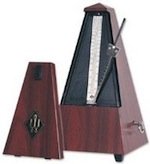
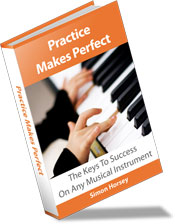
New! Comments
Have your say about what you've just read!Leave me a comment in the box below.